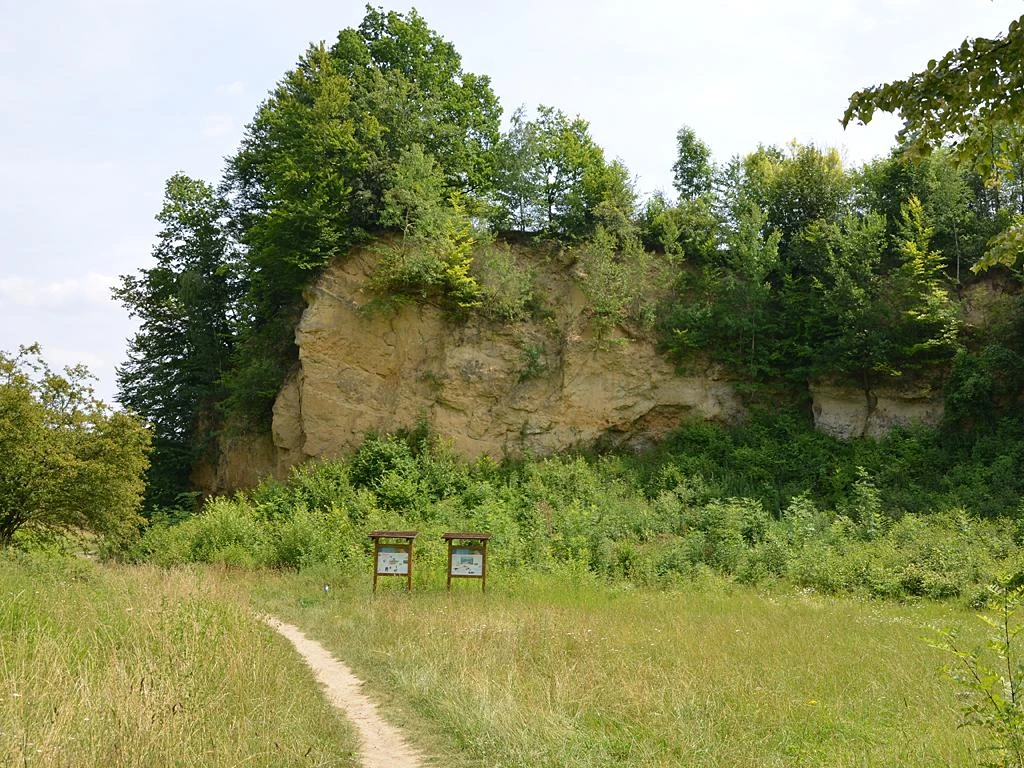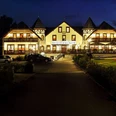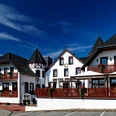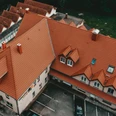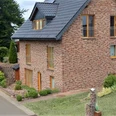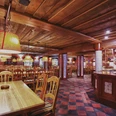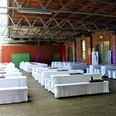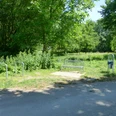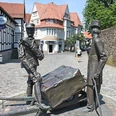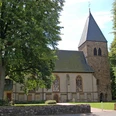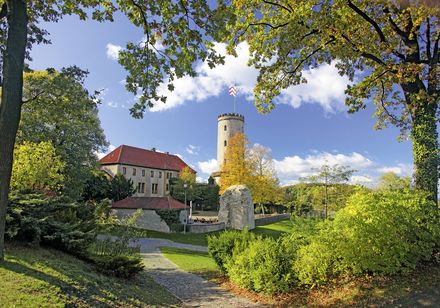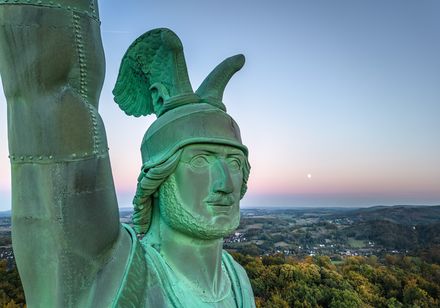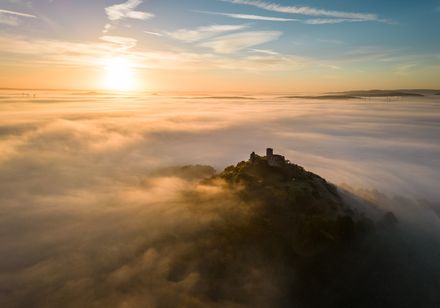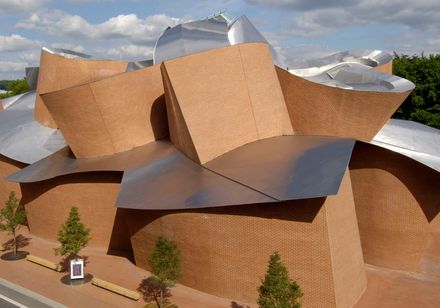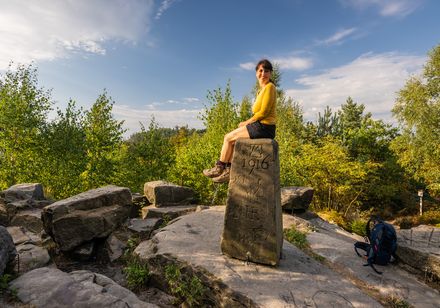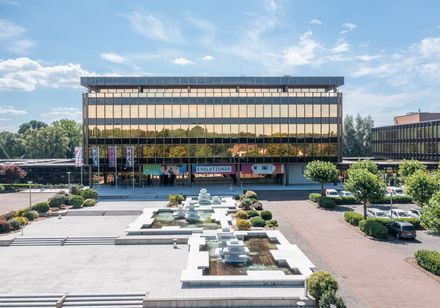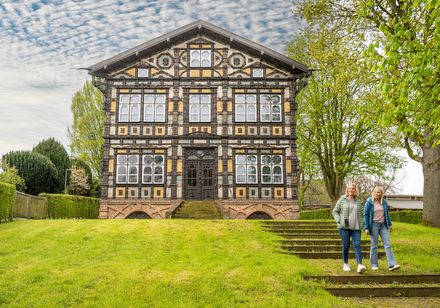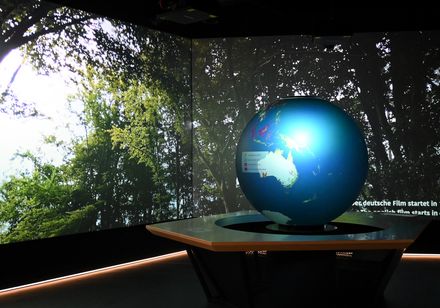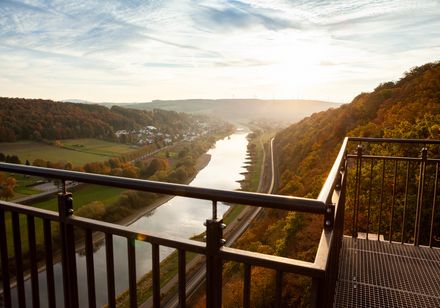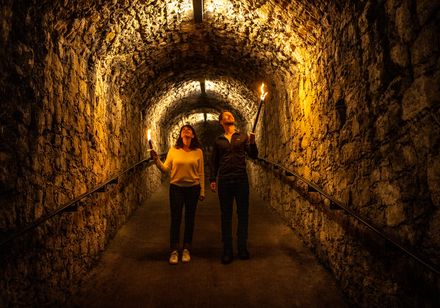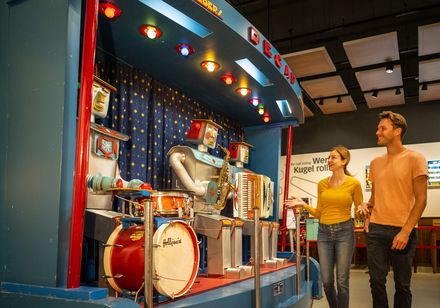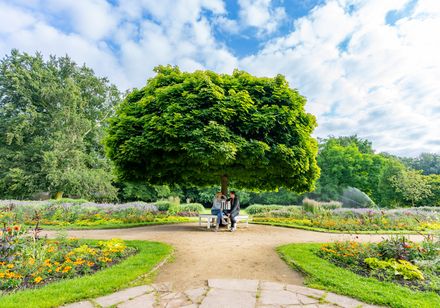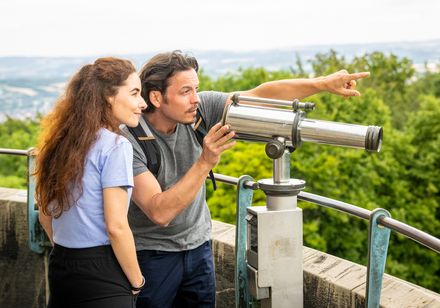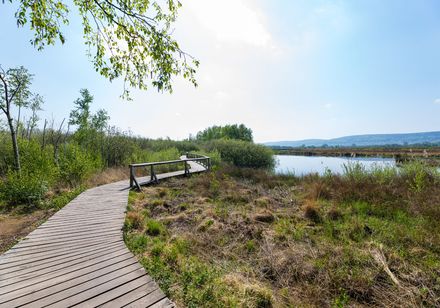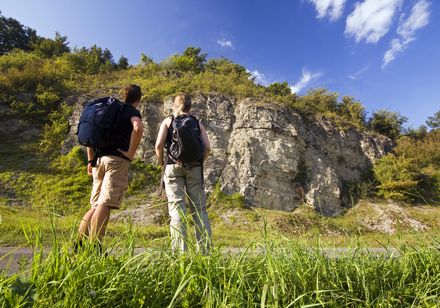We say "in" the Doberg, not "on" - because it is not a mountain at all, with a very low height of only 30 meters. Rather, the Doberg is a rugged, man-made landscape, basically an old open-cast mine. Like everywhere else in the region, marl was mined here for generations.
Marl is sedimentary rock that was deposited on primeval sea beds. Farmers used the calcareous marl to improve wet areas with acidic soils for cultivation.
At the beginning of the 20th century, Bünder teacher and collector Friedrich Langewiesche first discovered a toothed whale skeleton and later the famous Doberg manatee skeleton, both over 30 million years old. He and other citizens campaigned vehemently for the protection of the Doberg from complete exploitation. As early as 1909, the district government opened a "Doberg file" with the aim of protecting the area. Mining was stopped and the old marl pit has been a particularly valuable natural and archaeological monument for many years.The Doberg is also known worldwide: nowhere else is the sequence of layers of the Oligocene better visible than here in Bünde.
A detour to the Doberg on foot is definitely worthwhile, cycling is not permitted in the area!
Further information: www.fahr-im-kreis.de
Good to know
Directions & Parking facilities
The Doberg nature reserve is easy to reach by car or bicycle. Parking is available in Albert-Schweitzer-Straße, directly at the entrance to the Doberg.
More information
Always know what's going on - a free number for all occasions: Bus and train customers in NRW can call 08006 50 40 30 around the clock for fare information, timetable information and more.
License (master data)
Nearby
